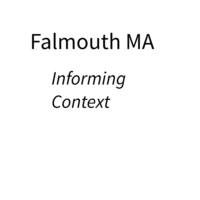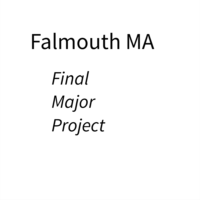Make a trailer was another week 2 task.
Creating videos is not a new skill for me as over the years I have swopped between the moving and still image formats on a frequent basis. Creating a trailer that would act as a teaser for my project in a few days was not something I was ready to undertake in week 2 of the Surfaces and Strategies module. I had always taken the position that I would at some stage need to produce a trailer to help market my project. Trailers are being more important in a world where if you want to communicate via social media people engage more with video over text messages
I decided early on that my trailer would include a mix of moving and still images though I would have preferred the video to be behind the scenes material showing the creative process but at the current time this is something that I have not included in my production plan. Something I realise I need to address especially if I want to start sending out teasers during Module 4, to generate more interest in my project.
I did consider including data on changes in the tide height throughout the year as an abstract form of time but could not decide on a suitable way at this time to incorporate the information into my trailer narrative so it has currently been discarded for use at a future time.
Instead I decided to use some of the timelapse footage that I had created on a recent walk along the coast plus footage recorded in the car heading to the location. Time is a key element of my practice so I decided to split my trailer into different photographic segments that explore time in different ways.
The first segment was drawn from my re-seeing childhood body of work before moving on to more recent work from images shot along the Essex Coastline that show the coastline is changing during the forces of nature as the tide eats away as the cliff faces. While walking along the coast line I have started to become fascinated by people using benches a a reminder of a persons life. I find this interesting for a number of reasons many of the benches include the year of birth a death of the individual which again is an expression of time. The reason families have put these benches in these places is because they associate that location with the person they have lost. The benches for me represent signifiers or trace of the fact that Joe Bloggs frequently visited or walked along a part of the coast than I am travelling along as part of my project. The benches with the names of people can be viewed as a proof of existence which is something Barthes ascribed to photography (Barthes, p76) “I can never deny that the thing has been there.” In fact by photographing these benches am I in fact undertaking a form of rephotography of the trace of an actual person.
Tilbury 2 Harwich Trailer from Simon Fremont on Vimeo.
I got the following feedback from other course members and tutors on my trailer:
- Dayana Sharon Marconi Wednesday 7 Jun: I think this trailer is really moving. I love the way in which you started with your own past, combining it with landscapes; how your past evolved into your present, represented by your walks along the coast and the people you meet and portray (like single moments to remember). Then you proceed representing a potential future, portrayed even by the coastal disruption and constant transformation, just like if landscape, again, is portraying human condition, and how our lives all end (benches) and become memories in other people’s lives, closing a circle you started with your personal memories. I love the fact that you keep it simple and straight. It would be easy being “dramatic” portraying this kind of subject matter, but your are presenting it in a quiet and peaceful way: you accepted what you are representing. Moving. It’s moving.
- Josie Purcell Wednesday 7 Jun: It’s fascinating to see the coastal difference in your images to where I live, and the names on the seats of people once connected to that place give it an emotional element too.
- Stella Baraklianou Wednesday 7:Hi Simon, I enjoyed being almost taken by the hand and virtually walked out and around the journey. The mix of stills and moving image could have potentially been a bit clunky however in this case they work well and compliment each other. One thing I would perhaps suggest is the use of text: I don’t know why you felt the need to explain in headings each section. In other words, the text could have been used to advance the narrative in different ways, rather than telling us exactly what we see or gather from the visual information. Nevertheless a lot of work has gone into the piece as I can see. Like for the “Simon Fremont Productions” too !
- Jo Sutherst Wednesday 7: Great video. I like the combination of the images from childhood mixed with the coastal images. Good work 🙂
- Philip Singleton Thursday 8 Jun: Hey – comprehensive and thorough – and a lot of ground covered literally and artistically. There is a good deal of new imagery in there too which is notable – you have been out more I see.
- Don Hodgson Thursday 8 Jun: lots of very clear good images from you. As always butI’m not sure how they all come together.
The feedback from different members of the cohort is interesting because there differing comments. I have therefore tried to group the comments made into themes.
I think those who have a better understanding of my work were able to see the links betweeen the different images shown in the trailer especially the human story and the cycle of life from childhood to death; the evolution of the coastline that is the physical journey being explored during my project. However the trailer was not successful in achieving a universal reading of those key themes of time and place.
During the creation process I was not sure exactly how I wanted to use the text and as a result it did not work in the way I had intended in the version of the trailer that I published. There is maybe a case for using less text in the trailer substitute that for behind the scenes.
Therefore I will look to experiment further with the trailer concept as a undertake more work for my final project during module 3.
References
- Barthes, R. (1988). Camera Lucida. 1st ed. New York: The Noonday Press.



